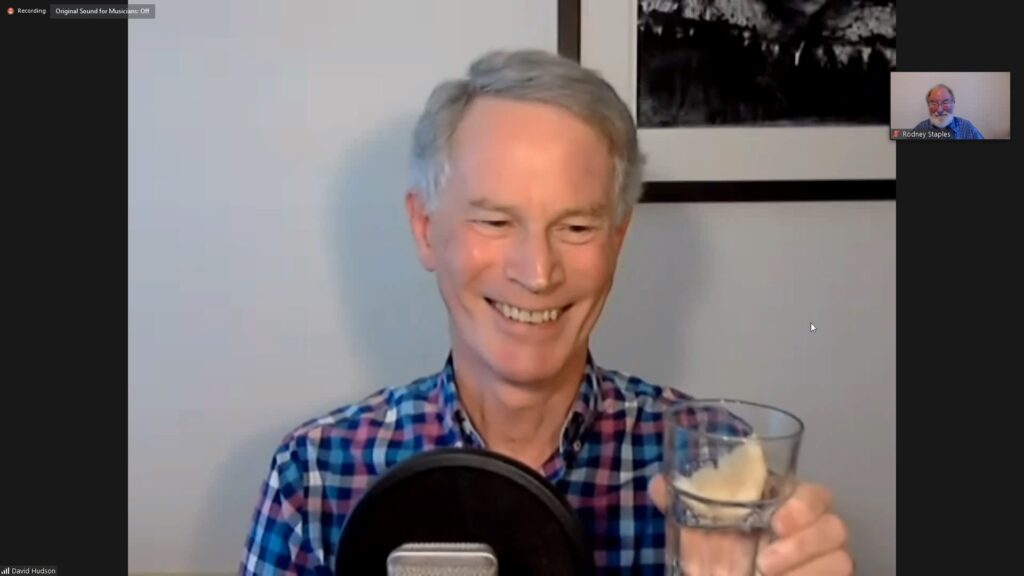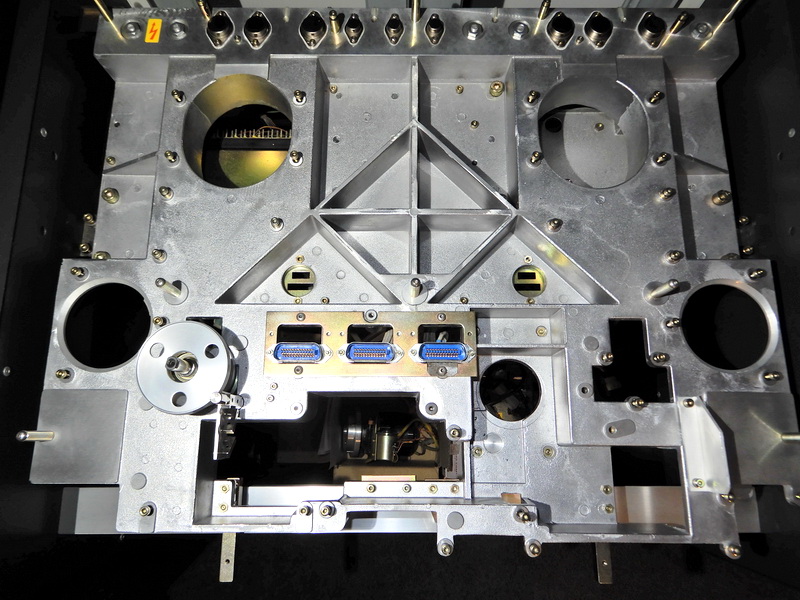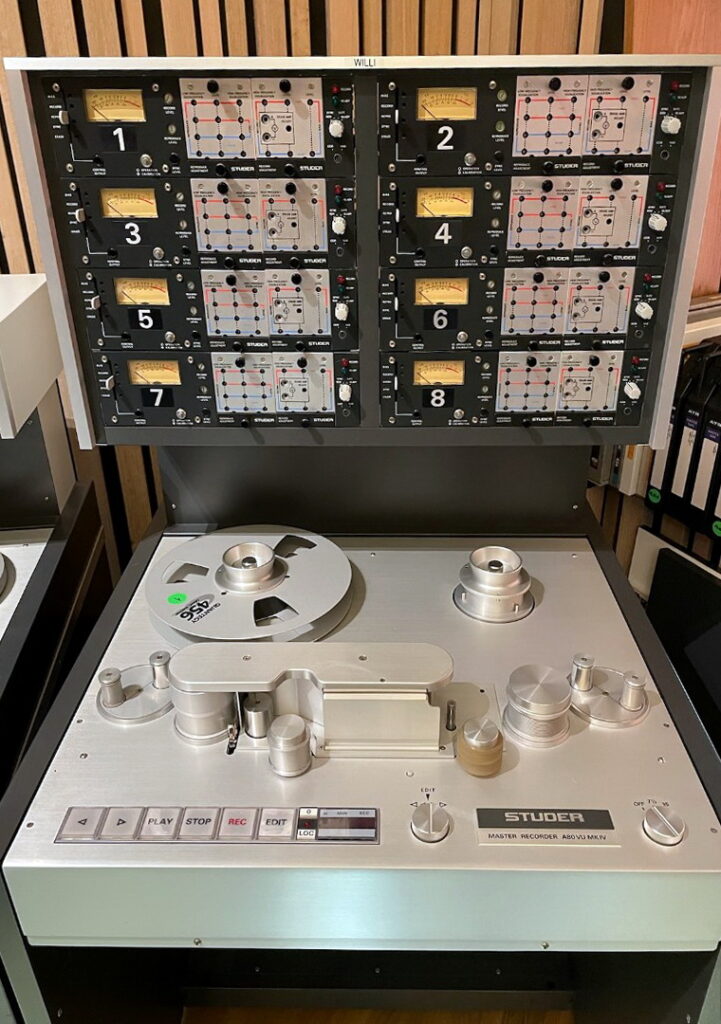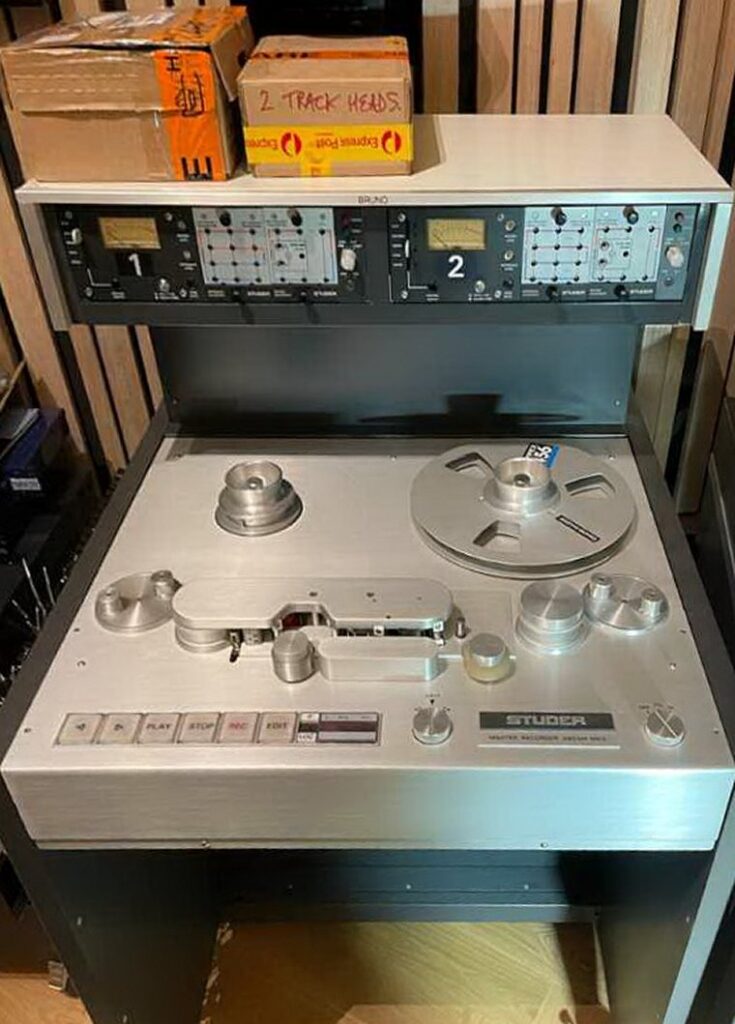On Monday 13th February, the Melbourne Section of the AES held our regular bi-monthly meeting.
We welcomed about 30 members and guests via Zoom.
Former Studios 301 Engineering Manager and local AES Section Committee Member David Hudson presented on the topic of:
Restoration of Vintage Studer A80s –
for a new life in a new century
Chairman Graeme Huon introduced David with a brief description of his background and history in audio recording in Canada and Australia.

Following an Acknowledgement of Country (David was presenting from Victoria’s Mornington Peninsula – home of the Bunurong First Nations people), David described his early experiences with audio recording in Canada. He recounted that his first example as a pre-teen in 1961 was a Voice of Music VM-700 “Tape-o-Matic” machine his elementary principal father frequently brought home from his school. David also mentioned his early electronic experience in designing a photocell relay for a school Science Fair which saw him go all the way to the national competition, and he also mentioned his amateur radio interests at age 15. He then went on to recount his time in the 1970’s as a musical performer with the group “Hudson Carr Poole”/”Marilyn Hudson Carr & Poole”.
David then told how after graduating from the University of British Columbia (EE) he was able to combine his electronic and musical skills into a recording studio career at Vancouver’s Little Mountain Sound Studios – at that time Western Canada’s largest studio. He recounted how this led to his exposure to Studer tape recorders and the installation at Little Mountain of a Studer A80MKII 24 track. When he left Canada in 1977 for a year-long around-the-world adventure, his relationship with Studer Canada (particularly Sales Director Bruno Hochstrasser) was able to open doors at Studer HQ in Switzerland which led to the first of several factory tours.
David told how, in 1978, he landed in Sydney, and was able to almost immediately land a job with EMI Studios 301 which was embarking on a major rebuild of 7 studios.
This involved the installation of Neve consoles and Studer A80’s. This effectively halted the round-the-world tour, and David stayed at 301 for ten years, ultimately becoming Engineering Manager. He commented that EMI had the 2nd largest fleet of Studer recorders, only surpassed by the ABC.
David noted that his long association with Studios 301 put paid to his original plan to ultimately return to Canada.
He told of how he left 301 in 1988 to join the newly formed Amber Technology.
David then proceeded to the specifics of the restoration project. He started with a chronology of the various versions of the A80, starting with the original prototype in 1966, then the A80 MK I released in 1970, right through to the A80 MK IV MCH (1986 – Dolby HX PRO, transformerless I/O). He told the meeting that 1989 saw the end of A80 production, with more than 10,000 units produced over its lifetime.

David presented a photograph of the A80’s impressively well-machined diecast aluminium transport chassis whose strength and rigidity formed a very stable platform for the motors and head assembly.
He went on to describe the two particular machines which were the subject of this restoration project.
The first was a one-inch “video layback” machine, which had been in storage at Doron Kippen’s Music&Effects studio since the one-inch B/C video formats had been superseded by newer technologies. He indicated that this machine was in very good condition and had very low use (686hrs). David explained the function of a layback machine was to take audio transfer work away from the expensive B/C Format video recorders. He covered its highly unusual configuration and the challenges associated with converting it to a more standard one-inch audio recorder. Factors like the speed for the PAL C format video is non-standard for audio (9.44 inches/second), and the tape wrap and takeup spool rotation has to be reversed for B format, with the attendant changes to motor drive and differential braking.
He spoke of how he considered the reconfiguration options for such a machine – either as a one-inch 2-track “super analogue” recorder or as a classic one-inch 8-track. He decided that the classic 8-track would probably be more useful and saleable. He commented that the goal of the restoration was to have fully functional machines which could be passed on to parties who would use them for the purpose they were designed.
David went on to describe in detail the work and parts needed to restore the machine and convert it to the new format. This was a meticulous exercise in replacing parts affected by age and use, as well as the non-standard parts specific to the “layback” version, followed by precision mechanical and electronic alignment.
The electronics were also replaced with MK IV amplifiers, to bring it up to the sonic performance of the last A80 machines to come off the Studer line.
The sourcing of used, new-old-stock, and aftermarket parts from around the world for machines that have been out of production for over thirty years certainly required patience and tenacity, which David seems to have exhibited in spades!
All this resulted in something as close to a factory-new machine as this observer can imagine.

David then moved on to the half-inch machine. He told us that this was originally a cassette master recorder for generating master tapes to be used in loop bin playback for generating cassette copies. As such it was a half-inch 4-track machine running at 3.75 and 7.5 inches/second.
David told us that this machine was destined to become a half-inch 2-track 7.5/15 inches/second mastering machine.
Again, David described his meticulous conversion back to factory standard and the upgrading to MK IV amplifiers.
He then described the mechanical and electronic tools and methods used to ensure the correct performance to factory specs, leaving us confident that these machines will continue to serve their new owner for many years to come.
The fact that both machines first came to David as special-purpose variants of the A80 and had to be converted to more standard configurations as well as be restored to factory-new condition makes David’s achievement even more remarkable.
David then briefly described the new facility they have been delivered to, Frying Pan Studios at MONA in Hobart, Tasmania – and how they will be paired with an absolute classic console – a 1956 EMI REDD.17 Console originally from EMI’s Abbey Road Studios in London.
Frying Pan Studios is a studio within a museum – a fitting destination for these classic machines.


David confided that he also owns another A80, a VU-2-1/4” MK II, which will be his next restoration project – this time for his own use.
The things some people get up to in their retirement!
A Q&A session followed David’s presentation where many questions were raised about specific details of David’s experiences, many from people who had achieved or were planning tape recorder restoration projects themselves.
We thank David for telling us the story, and more importantly for restoring these true examples of recording history, to not merely working order but to near factory-new condition.
A video recording of the Zoom session has been created. An edited version can be found below.
This video can be viewed directly on YouTube at: https://youtu.be/9nbKCFSr1Vc
A PDF version of David’s slides can be found below:
Related Links:
Studer today – no tape machines but still making consoles (Now in Canada): https://evertz.com/products/audio-consoles-processing/
Gary Poole of Marilyn Hudson Carr & Poole: https://garypoolesongs.com/
The Studer Legend – the history of our tape machines (Bruno Hochstrasser) https://www.youtube.com/watch?v=DDj7k4R4hoM&t=12s
Philip van der Matten’s repository of Studer documents: https://www.reeltoreel.nl/studer/Public/
Information on Frying Pan Studios at MONA:
https://fryingpan.mona.net.au/
https://fryingpan.mona.net.au/story
ABC News recent coverage of Frying Pan:
https://www.abc.net.au/news/2023-02-01/abbey-road-recording-history-finds-new-home-at-mona/101912842
https://www.youtube.com/watch?v=Yt3GpDwoOcw
Gunter Wagner – remaking the Neumann U47: https://www.wagner-microphones.com/

